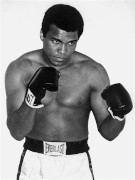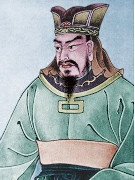Diamonds (rich/achiever)
Hearts (loving/social)
Spades (information/explorer)
Clubs (serious/killer)
Temperance (Optimizers)

Deep work:
- Managers schedule vs makers schedule
- Mythical man month
- Golden goose

Ockham’s & Hanlon's razor:
- Simplify
- "When you hear hoofbeets, think horses."
- Never attribute to malice that which is more easily explained by stupidity.
- Fundamental attribution error: think someone IS mean rather than thinking she had a bad day.

Wheaton eco scale:
- Contrast
- Goldilocks temperature

Complex adaptive systems:
- Differentation + integration
- Adaptive & resilient
- Emergence
Silence (Thinkers)

Thinking fast & slow:
- Default mode thinking

Understanding vs information:
- Seing the front
- Roughly right, precisely wrong
- Cargo cult: when people dont really understand what they're doing, they are cargo cultists.
- First in first out vs last in first out

Game theory:
- Repeated game
- Simultaneous game
- Tragedy of the commons / prisoner's dilemma
- Tit for tat
- Zero, positive, negative sum
- Sequence?

Indirection:
- Second order thinking
- Nextbest
- Road less travelled
Order (Fighters)

Break points / Critical Mass:
- Liquid, gas, solid, plasma.
- Cascading, butterfly effect.

Parkinson's Law
- The job expands to the allotted time.

Slowness
- Slow is smooth, smooth is Fast
- Anything worth doing is worth doing slowly.

Laws of Motion
- velocity = speed + vector (direction).
- momentum = mass x velocity, whereas inertia is a function of mass.
- an object either remains at rest or continues to move at a constant velocity, unless acted upon by a force.
- Object's mass determines the effect of a push
- When one body exerts a force on a second body, the second body simultaneously exerts a force equal in magnitude and opposite in direction on the first body.
Resolution (Generals)

Probability x Payoff:
- Babe ruth, frequency vs magnitude.
- Expected value: odds of gain x amount of gain, odds of loss x amount of loss.

Minimax & Maximin:
- Offense vs defense. Strength & weakness.

Marginal Utility:
- Dimishing returns
- Too much of a good thing (balance)

Reciprocation tendency:
- Revenge / Return the favour. (fairness & guilt)
- Mutually Assured Destruction
- Samson complex
- The only winning move is not to play: tic tac toe
- Arms race
Frugality (Artists)

Statue of Liberty and Statue of Responsibility:
- Freedom vs equality: diversity, the necessary materiel of selection and evolution. Only the man who is below the average in economic ability desires equality; those who are consciuos of superior ability desire freedom.
- Corporations(right) vs Government(left): the fear of capitalism has compelled socialism to widen freedom, and the fear of socialism has compelled capitalism to increase equality.
- There's only one kind of people - the kind that likes to divide up into gangs. The same people work for both, switching to whomever pays the most.

Loose & tight coupling
- Weakest link in chain
- Lieblig's law of the minimum
- Flexibility

Leverage points
- Leverage points: Leverage refers to the power one side has over another.
- Archimedes "Give me a place to stand and I shall move the Earth".
- Feedback loops - positive, negative, delay.(MAYBE SEPARATE CARD)

T-shapes:
- Generalists vs specialists. Breadth vs depth
Industry (Technologists)

Growth lifecycle:
- Utterback's Product / Proces model through Fluid, Transitional and Dominant stage.
- Von Hippel's tech adoption life cycle, S curve innovators(2.5%) - early adopters(13.5%) - early majority(34%) - late majority(34%) - laggards(16%) (excess demand / insufficient demand.)

Falsification & Confirmation bias:
- Filter bubble : they filter out links they think you're unlikely to click on
- Echo chambers: same ideas bounce around
- Commitment & Consistency Bias: i'm all in.

Equilibrium:
- 2nd law of thermodynamics (entropy increases(disorder)) The second law serves as a reminder that orderliness needs to be maintained.
- Supply & Demand.
- Homeostatis: when you get too cold, you shiver to warm up; when its too hot, you sweat to cool off.
- Regression to the mean

Inversion:
- c = a + b
- Discounted cash flow
- Bird in hand
Sincerity (Football Players )

Opportunity Cost: forgo alternative
- Comparative Advantage: trade specializing

Space:
- Limit and expand space

Dunning-kruger effect: (sugar high - immediate drop - low point - plateau - inflection point - fluency)
- the phenomenon where low ability people think they are high ability(because of the initial fast sugar high). The opposite of the impostor syndrome.
- Impostor syndrome: focus on their failures or fear of failure lead to high stress and anxiety.

Friction / War of Art / Procastatination / Fear / Way of least resistance
- Easy vs hard, worst first, willpower
- Bike shed (most trivial part is what the debate is about)
Justice (Football Managers)

Survivorship bias: unhappy employees have chosen to leave the company, but you cannot capture their opinions when you survey only current employees
- Winner takes all: History written by the victor, and most fail.

Behaviorism:
- Pavlov's dogs (ad reflex, price = quality)
- Skinner box (reward/punish addiction)
- Game design reward system

Network effect:
- Metcalfe's law: grows proportionally to the square of the number of phones. 2 phones = 1 connection; 5 phones = 10 connection; 12 phones = 66 connections.

Antifragile: some things benefit from shocks; they thrive and grow when exposed to volatility, randomness, disorder, and stressors and love adventure, risk and uncertainty.
- Antifragility is beyond resilience or robustness. The resilient resists shocks and stays the same; the antifragile gets better. (thrive on chaos, stress immune system, working out)
- Feast & famine, use it or lose it.
Moderation (Investors)

Compounding:
- Exponential growth
- Surfing the wave.

Margin of safety:
- Redundancy.
- 10 Permaculture principles:
- Observe
- Connect(web)
- Catch and store energy and materials
- Each element performs multiple functions
- Each function is supported by multiple elements (redundancy)
- Leverage points (least change for greatest effect)
- Grow by chunking (start at the doorstep)
- Optimize edge(adjacent possible)
- Collaborate with succession(maturity)
- Use renewable resources

Maslow's hammer:
- Product / market fit: first to market seldom matters, first to product/market fit is almost always the long term winner.

Myopic loss aversion: frequency
- Deprival super reaction, near miss.
- Sunk cost fallacy: am i throwing good money after bad?
- Twice the reaction of loosing vs winning
Cleanliness (Scientists)

Noise: Source - Transmitter - Channel - Receiver - Destination (use correction device)
- Garbage in, garbage out

Relativity:
- General (space time)
- Special (matter <=> energy)

Four Forces:
- Elektromagnetism
- Weak(half life) & Strong(matter)
- Gravity

Natural selection/evolution: the species that survives is the one that is able best to adapt and adjust to the changing environment in which it finds itself.
- Competition & Cooperation.
- Creative destruction, Paradigm shift.
Tranquility (Comedians)

Carbon Creativity: imagine, create, play, share, reflect.
- Master toolkit: 20 combination blocks (10^19) more than seconds since big bang.
- 1) Adjacent possible - 2) Liquid networks - 3) Slow hunch - 4) Serendipity - 5) Error - 6) Exaptation - 7) Platforms - 8) Constraints

Hindsight: look back twice as long as you want to predict.
- 5 whys, you can ask any number of whys to get to the root cause.
- Postmortem: examination of dead body to determine cause of death

Perception(the mind filters everything into a template, which means we dont have all the data(dimensions) of the world) / lens / belief / paradigm / empathy / point of view:
- Quantum thought (2 thoughts at a time) / Shrodinger's cat / Law defendant & accuser
- Thinking gray: is the ability to hold two opposing thoughts at the same time while still retaining the ability to function.
- 3 oldest Black & White arguments: fight/flight, us/them, right/wrong
- Chaos theory: Heisenberg's uncertainty principle
- Entanglement

Social proof:
- Mimicking the herd
- Wisdom of the crowd
Chastity (Famous women)

Envy:
- Status anxiety. Keeping up with the Jones's. Fear of missing out.
- Fairness, jealousy.

80 / 20 pareto: the one thing
- Focus: Arjuna - "I can only see the eye of the bird"
- Two front wars, multitasking: if you chase two rabbits, you'll lose them both. You can do anything, but not everything.

Buridan's ass: paralysis by analysis
- Hick's law: a greater number of choices increased the decision time logarithmically. (User experience design)
- Tyranny of small decisions: death of a thousand cuts
- Paradox of choice, decision fatigue: Obama wear only blue or gray suits. I dont want to make decisions about what im eating or wearing.

Fog of War / WYSIATI:
- Incomplete information / Complete information
- Imperfect information / perfect information.
- Asymmetric information
Humility (Actors)

Incentive caused bias:
- Whose bread I eat, his song I sing. (Fed ex, Serpico)
- Intrinsic vs Extrinsic motivation (personal goal vs money bonus fx)
- Moral hazard: you take on more risk, once you have information that encourages you to believe you are more protected.
- Goodhart's law: when a measure becomes a target, it ceases to be a good measure. (perverse incentives)
- Cobra, hydra effect
- Shirky principle: institutions will try to preserve the problem to which they are the solution.

Trust:
- Like / dislike, trust / denial, authority
- Gresham's law: Bad behaviour drives out the good. Fraudulent system.
- Potemkin village: something specifically built to convince people that a situation is better than it actually is. (killing homeless people before world cup)
- Dunbar's number: maximum group size a stable group can be maintained. Team structure changes when reaching about 10-15 people, and 30, and 50.

Scale:
- Rare tigers. Law of large and small numbers. Bell curve / pyramid.
- Pascal's wager / Black swans
- What type of customer are you hunting? ( Whale, Dinosaur, elephant, elk, wolf, mouse, bee, germ)

Scarcity:
- Lock in, switching costs & barriers to entry
- Free rider problem, public good
- Externalities/spillover effect
- Cost benefit analysis
- War of attrition: leaving vulnerable the side that starts to run out of resources first.